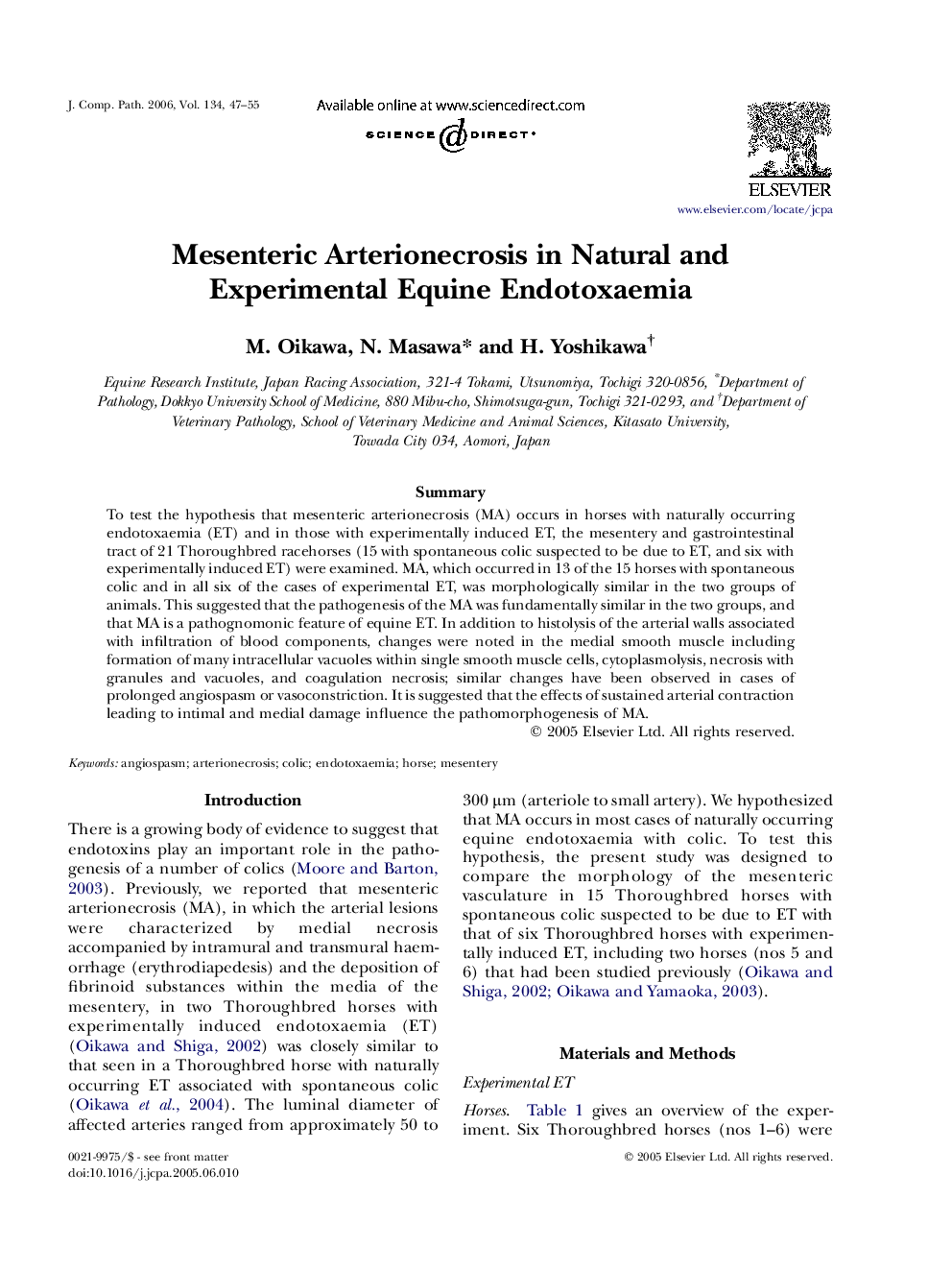| Article ID | Journal | Published Year | Pages | File Type |
|---|---|---|---|---|
| 2438792 | Journal of Comparative Pathology | 2006 | 9 Pages |
Abstract
To test the hypothesis that mesenteric arterionecrosis (MA) occurs in horses with naturally occurring endotoxaemia (ET) and in those with experimentally induced ET, the mesentery and gastrointestinal tract of 21 Thoroughbred racehorses (15 with spontaneous colic suspected to be due to ET, and six with experimentally induced ET) were examined. MA, which occurred in 13 of the 15 horses with spontaneous colic and in all six of the cases of experimental ET, was morphologically similar in the two groups of animals. This suggested that the pathogenesis of the MA was fundamentally similar in the two groups, and that MA is a pathognomonic feature of equine ET. In addition to histolysis of the arterial walls associated with infiltration of blood components, changes were noted in the medial smooth muscle including formation of many intracellular vacuoles within single smooth muscle cells, cytoplasmolysis, necrosis with granules and vacuoles, and coagulation necrosis; similar changes have been observed in cases of prolonged angiospasm or vasoconstriction. It is suggested that the effects of sustained arterial contraction leading to intimal and medial damage influence the pathomorphogenesis of MA.
Keywords
Related Topics
Life Sciences
Agricultural and Biological Sciences
Animal Science and Zoology
Authors
M. Oikawa, N. Masawa, H. Yoshikawa,
